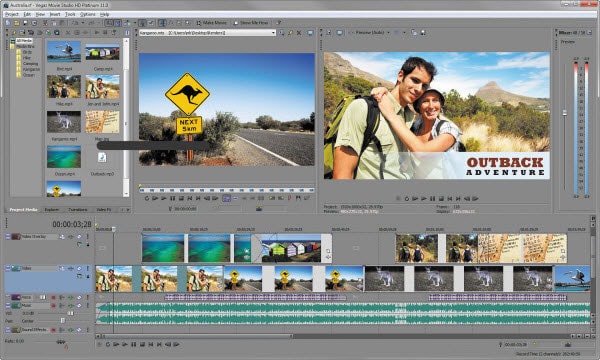

Video and audio elements of a clip can be edited independently, enabling some more complex (but very fundamental) editing techniques such as insert and split editing. While Vegas Movie Studio doesn't offer a storyboard-based editing interface, video added to its timeline is presented as a continuous string of thumbnail icons, giving an immediate representation of a video's content without having to play or scrub in the video monitor. This is less of an oddity for Movie Studio at the entry-level though, as competitors such as Pinnacle Studio and Ulead VideoStudio play by different rules too. Vegas' approach to video editing is a rather unorthodox one, as there's no source/edit monitor layout for three-point editing, as you'll find with most of its competitors. Video can also be imported from Sony DVD camcorders in both versions. DV is fully supported in both flavours, complete with device control, batch capture and scene detection. Also, the Platinum Edition will read from AVCHD devices (but won't write to them). This is an important point to note, as HDV camcorders are becoming so inexpensive and attractive to mainstream users. The basic version is quite limited in its supported video formats, and won't edit HDV footage, while the platinum edition will.

Quite how well Vegas Movie Studio fares in terms of features depends on which version you opt for. The tracks themselves have their purpose pre-defined before any media is applied, as opposed to those in the full version of Vegas which become audio or video tracks only when clips are dropped onto them.Īside from this fundamental difference, there's very little to distinguish between Vegas and Vegas Movie Studio in terms of design and layout, which will serve users well, allowing them to upgrade to the pro-level software without encountering horrendous new learning curves.


 0 kommentar(er)
0 kommentar(er)
